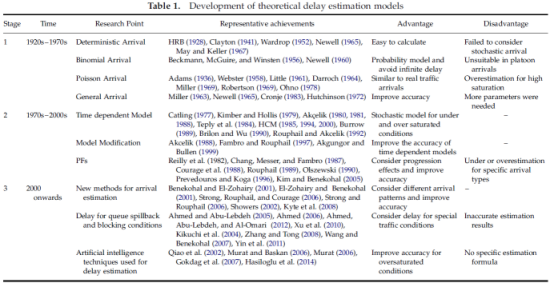Transport Reviews Volume 36, 2016 - Issue 4
CrossRef citations to date: 9
Impact Factor: 4.647
Traffic delay is an effective index for estimating the performance of a signalized intersection. In this study, we provide a comprehensive review of the theoretical delay estimation model over the last ca. 90 years. For fixed-time signalized intersections, we classified the estimation development process into three stages. Stage 1 covered 1920s–1970s, when approaches based on steady-state theory were derived. These methods obtain accurate predictions with low degrees of saturation, but overestimate the delay with higher saturation and cannot provide reasonable results for oversaturated conditions. To accommodate high saturation, time-dependent models were proposed and improved in Stage 2, 1970s–2000s, using coordination transformation techniques. Progression factors to account for the filtering impact from upstream intersections were also introduced during this period. Due to inaccurate approximation of certain specific traffic conditions, some modified approaches and supplementary terms were derived from 2000 onwards (Stage 3), which facilitate the evolution of the delay estimation method and improved approximation results. Some new techniques, including artificial intelligence algorithms, were also introduced into delay estimation in this era. We also describe theoretical delay measurement methods for actuated control intersections with a similar time line. From our summary of the evolution of theoretical delay models, we highlight some deficiencies and future research directions.




 首页
>
正文
首页
>
正文